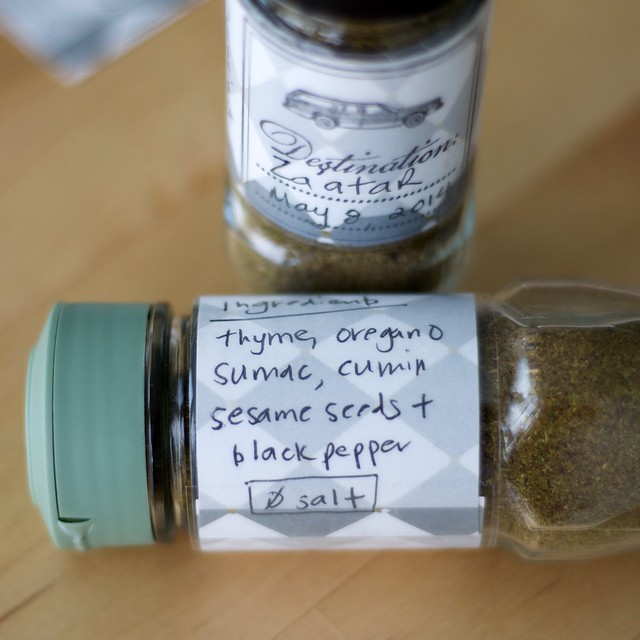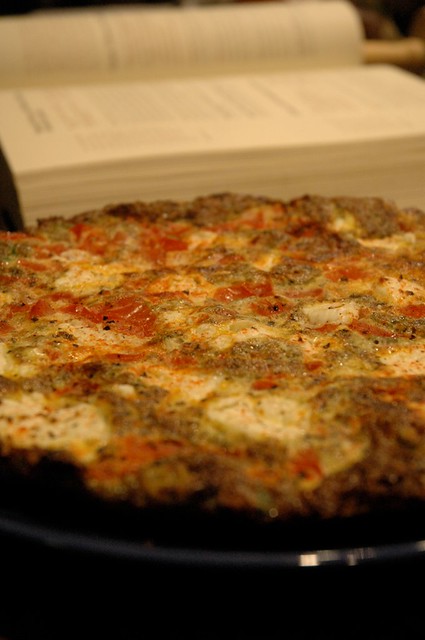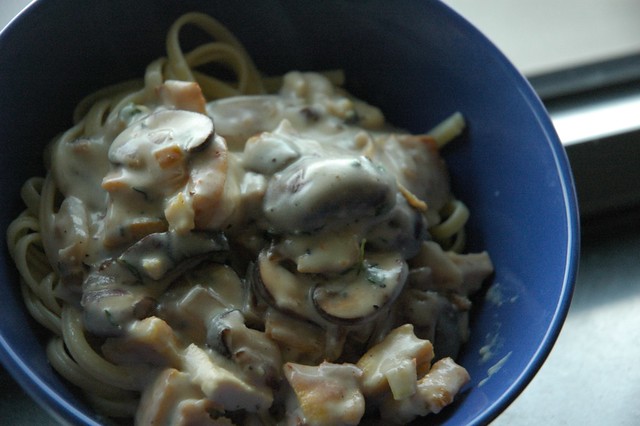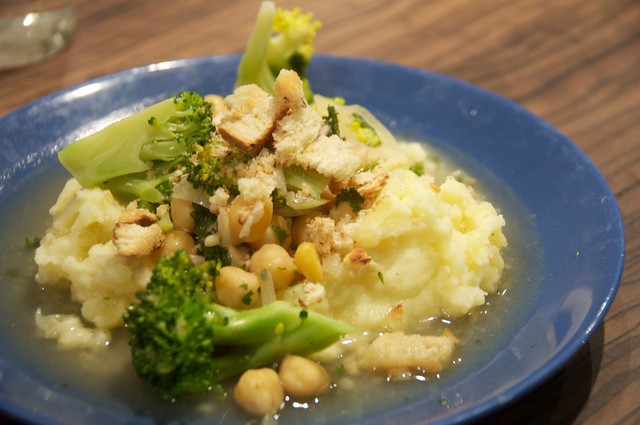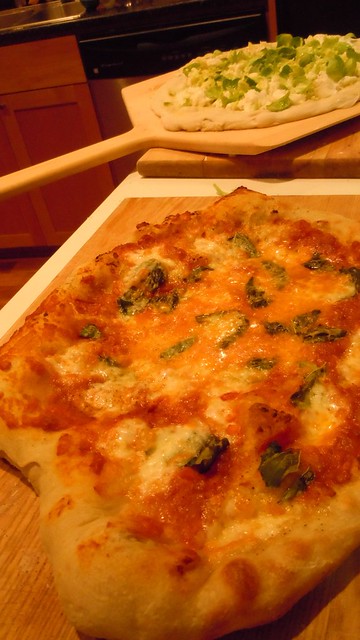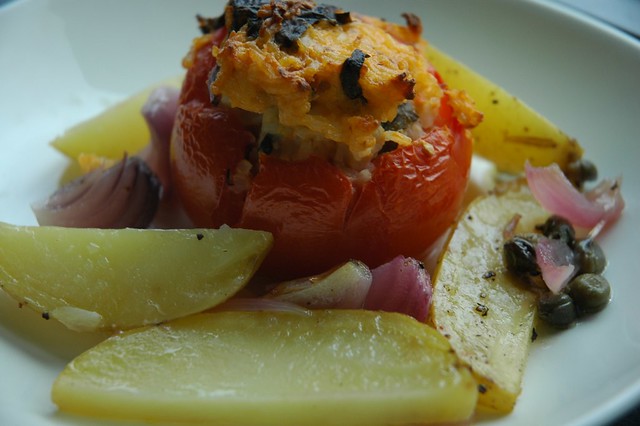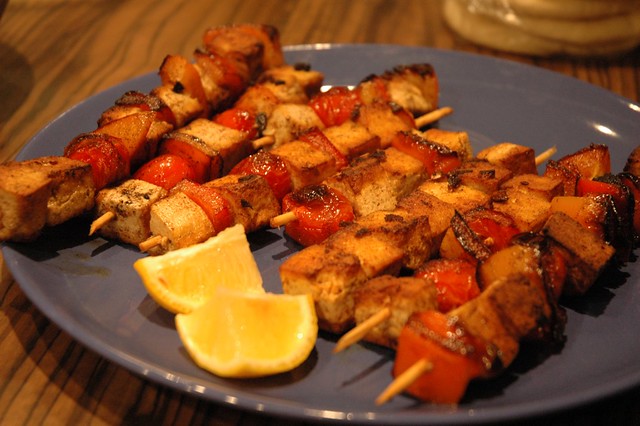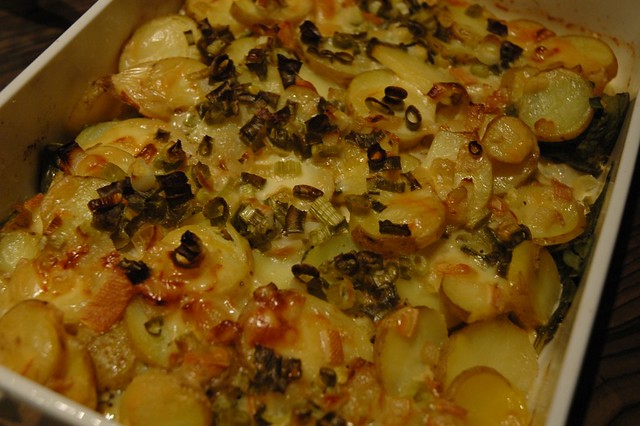I think
tofu can be tricky to cook with sometimes. Here are a few basics: I have been most successful using a high-quality extra-firm
tofu that has been processed with calcium sulfate (increases the calcium content). I like to "quick drain" the
tofu to help expel the water out of it, so that it can pick up the flavors or seasonings of the dish you are trying to create.
Quick-drain: drain water from package, and wrap
tofu in light cloth or paper towels. Squeeze or press gently to expel water and let sit in a colander for up to 10 minutes. Place a heavy object on top of
tofu (but don't smash it), like a cutting board with a glass or plate on top of it.
Here are the different types of tofu and what they can be used for:
Silken-Style
extremely "silky"
used in blending, smoothies, frosting, miso soup etc
Breaks apart easily, not recommended for stir-frying
Soft Tofu
Can be used steamed, in soups, breaks apart very easily
Can be scrambled like "eggs" or
tofu scramble
Firm
Can be used in stir-frys or soups
Holds together better than soft styles
Extra-firm
Best used in stir-frys, grilling, baking, roasting and bbq-ing.
Holds together well; can be frozen, then thawed for chewier, meatier consistency.
This
recipe is ubiquitous-it can be used to top pasta, salads, added to fajitas, enchiladas, or anything you can dream up.
Basic soy-cumin pan-roasted tofu
1 package extra-firm tofu, quick-drained and cubed into 1-2" cubes
1/4 cup peanut oil, divided
1-2 tsp cumin
1-2 tbsp low-sodium soy sauce
Directions
1. Heat half of the peanut oil over medium-high heat in cast iron skillet or large saute pan. Tofu soaks up the oil, but it also has a high water content and this amount really browns the
tofu without it sticking to the pan. Peanut oil can be heated to a higher temperature than olive oil without smoking.
2. Once oil is hot, spread
tofu out in even layer and allow to simmer and brown until golden along edges. The
tofu will crackle and begin to sizzle. It will turn yellow to golden to golden brown (usually about 10-12 minutes).
3. Sprinkle 1/2 tsp cumin on top of
tofu once even in color. Flip
tofu over and continue cooking on other side. You can add the rest of the peanut oil.
4. Sprinkle with cumin again and turn once more.
5. When both sides of the
tofu are golden-brown. Add about 1-2 tbsp of low-sodium soy sauce, it will smoke slightly then evaporate.
Turn heat off and serve alongside any dish.
Note: If you don't quick drain the
tofu, the water comes out during the cooking process and it will be harder for the
tofu to brown. It will, in effect, stay soggy. You can do the same thing with any marinated
tofu also. Or throw it on the grill. The extra fat helps the
tofu to not stick to the grill or saute pan or baking dish
Marinated Tofu (in this case BBQ-tofu a la Tex-Mex style)
1 cup or more prepared chipotle bbq sauce
1 package extra-firm tofu, quick-drained and cubed
1-2 tsp olive oil
1/2 cup white onion, chopped and diced
1-2 cloves, garlic, smashed
Directions:
1. Heat oven to 400 F
2. In a large mixing bowl, mix together bbq sauce, olive oil, onion and garlic.
3. Fold in
tofu cubes, being careful not to break the pieces
4. Spray baking dish with cooking spray.
5. Place
tofu mixture on baking dish, cover with foil and bake for 35-45 minutes. Stir and rotate for even cooking. This method allows you to forget about what is baking, and go on and do other things. Alternatively, you could broil over high heat for 10-12 minutes, checking every few minutes to rotate the tofu for a nice even golden broil.
(you could also make an Italian style baked or broiled
tofu with a balsamic vinegar, some Bragg's liquid aminos and some fresh rosemary, cooked the same way.)






